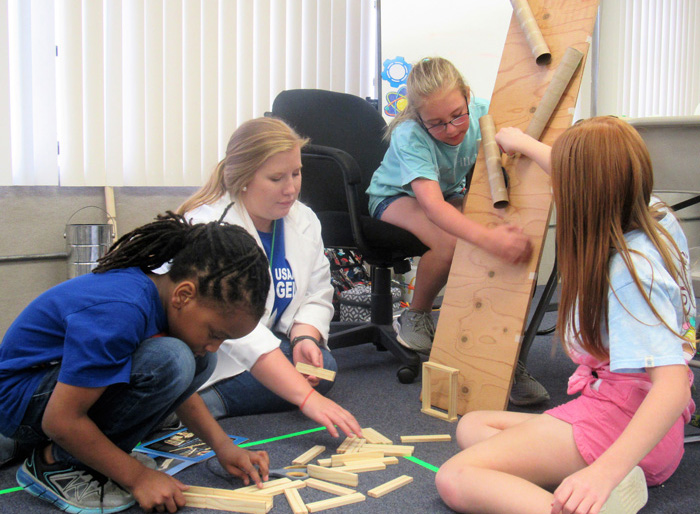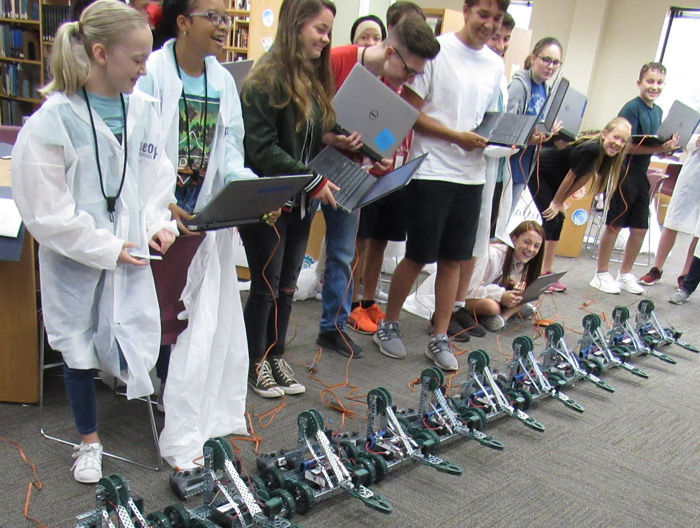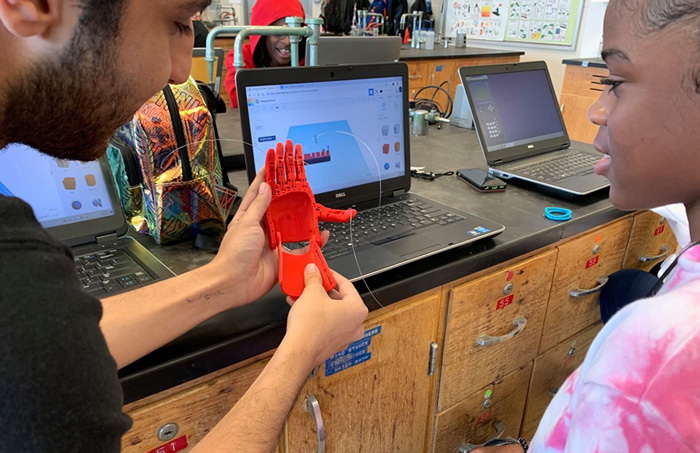GEMS Program Opens Doors, Young Minds to the Future of Technology, Innovation

When Nick Ranallo walks into the classroom, all of his students –grade school kids mostly, but a few a little older– sit up straight, stop talking, and start copying everything their teacher writes on the chalkboard.
Their favorite part is when he talks about blood spatter.
"We get to make this fake blood," says Ranallo, grinning as he pulls on a pair of safety goggles. "And these kids, they just love it – they're just really interested in this stuff."
Ranallo is just one of a group of more than 130 mentors, resource teachers, and clinicians nationwide taking part in the U.S. Army Medical Research and Development Command's annual "Gains in Education of Mathematics and Science" program, which is designed to promote science, technology, engineering, and math education to students in grades five-through-twelve. As a soon-to-be senior at the University of Maryland, Ranallo, a bioengineering major, operates as a "near-peer" mentor for sessions held at Hood College near the U.S. Army Medical Research and Development Command headquarters in Frederick, Maryland – which means he physically teaches classes, as opposed to sitting in a lecture hall.

"I try to keep it basic," says Ranallo, whose forensic science lessons are a consistent winner with kids of all ages. "I try to keep it simple, try to keep it like I was their age and trying to learn."
Of course it's how, exactly, those young kids learn that makes the GEMS program so popular. Over a series of series of individual, one-week sessions held across July and August each year, students are schooled in everything from basic engineering theory to the science behind crime scene investigations to the impact of technology on everything from robotics to football games. More than 1400 students participated in the program across all USAMRDC lab sites during this year's session, with the highest participation rate –more than 580 students total– taking place at the USAMRDC headquarters site.
"It's a beautiful thing," says Cicely Smith, an elementary school teacher from North Carolina who makes the trip to Maryland each year to volunteer as a resource teacher for the Frederick-based program. "Everything these college kids get from the younger students, and everything the younger students get from the curriculum. It's just eye-popping."
"Watching the students dig into the actual, real-world applications of science, technology, engineering, and math concepts is absolutely amazing," says Amy Baker, STEM Education Administrator for the U.S. Army Aeromedical Research Laboratory at Fort Rucker, in Alabama, where more than 430 students took part in GEMS classes this summer. "We know these kinds of efforts encourage critical thinking, increase the motivation to learn, and provide additional opportunities for the students to work collaboratively, which ultimately promotes better communication and social skills."

If that weren't enough of a benefit, students receive a $100 stipend for simply attending the free program, though they must submit an online application per the guidelines of the selection process. Specifically, the program is funded through the Army Educational Outreach Program via the Office of the Assistant Secretary of the Army (Acquisition, Logistics and Technology) – or, ASA(ALT) for short.
Says Smith, a seven-year veteran of the program, "This whole efforts really brings me back to why I do what I do for a living."
Indeed, that same sense of joy and achievement is echoed in Ranallo, who –in turn– recognizes his students' looks of amazement from his own youth – the awestruck face, the wide-eyed disbelief. It wasn't all that long ago, he says, that he was eager to see how far science –and perhaps a few drops of fake blood– could take him.
"We do a lot of high-tech stuff here," says Ranallo. "And the kids just love seeing cool results."
OVERALL GEMS PROGRAM PARTICIPATION STATISTICS
Students: 588
Near-Peer Mentors: 20
Peer Mentors: 8-15
Resource Teachers: 2
Students: 97
Near-Peer Mentors: 5
Peer Mentors: 24
Resource Teachers: 3
Students: 194
Near-Peer Mentors: 5
Peer Mentors: 12
Resource Teachers: 1
Students: 436
Near-Peer Mentors: 27
Peer Mentors: 31
Resource Teachers: 4
Students: 517
Near-Peer Mentors: 15
Peer Mentors: 7
Resource Teachers: 2














